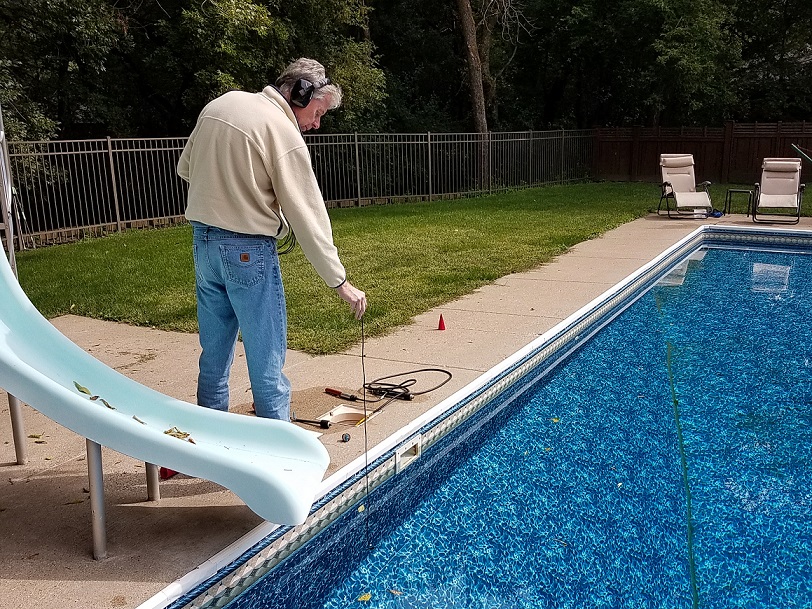Even if you’ve made a good leak noise and are using your electronic listening device filters correctly to pinpoint the location of a plumbing leak using a deck microphone, you may want to use your hydrophone attachment from within the pool to get an additional angle on these plumbing leaks. If the leaking pipe is close to the pool wall, or in a main drain line under the pool, the bubbling noise of air escaping from the pressurized pipe can be heard with your hydrophone through the pool wall. Using a hydrophone is a great way to double check or verify the location you identified from pool deck or help hone in on a leak noise that spans a large area.

Because you’re often able to get so close to the leak when listening through the pool wall, the digital readout on your Fisher electronic listening device is especially helpful for this use. There will typically be a more definite high point in the volume readout, which can be more accurate than just relying on your ears to determine the loudest place.
Based on our experience, this method of using a hydrophone for pipe leaks has proven to be much more effective than listening for problems from inside the line. Trying to get the hydrophone into pipes past T’s and elbows is time consuming (if not impossible), and unpressurized leaks may not even make a perceptible noise. Knowing how to use the right tool at the right time is an important way to make your leak detection jobs efficient and accurate.

